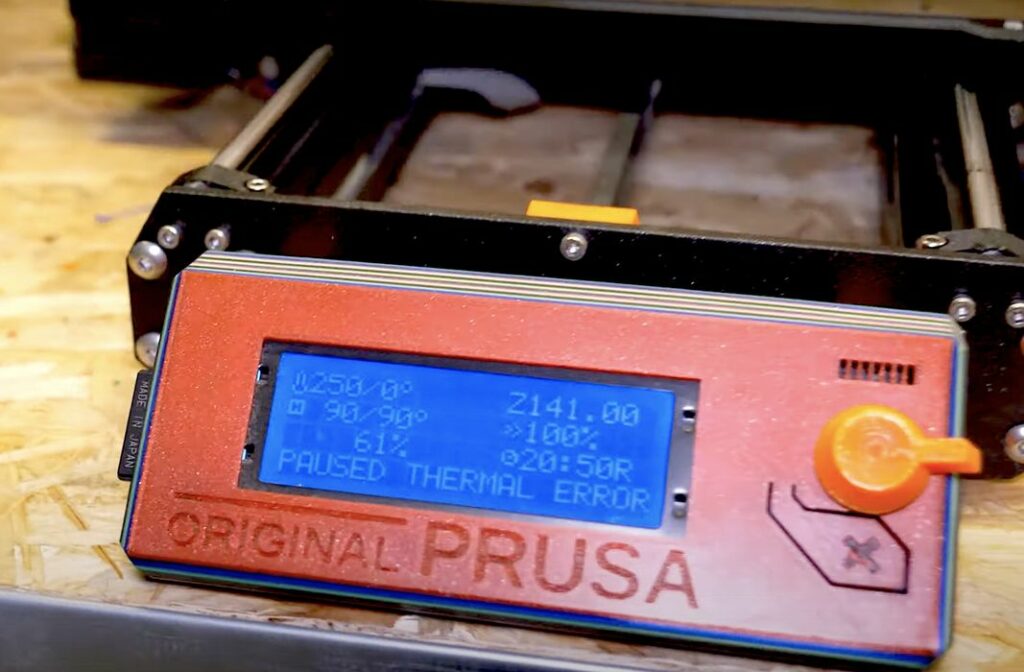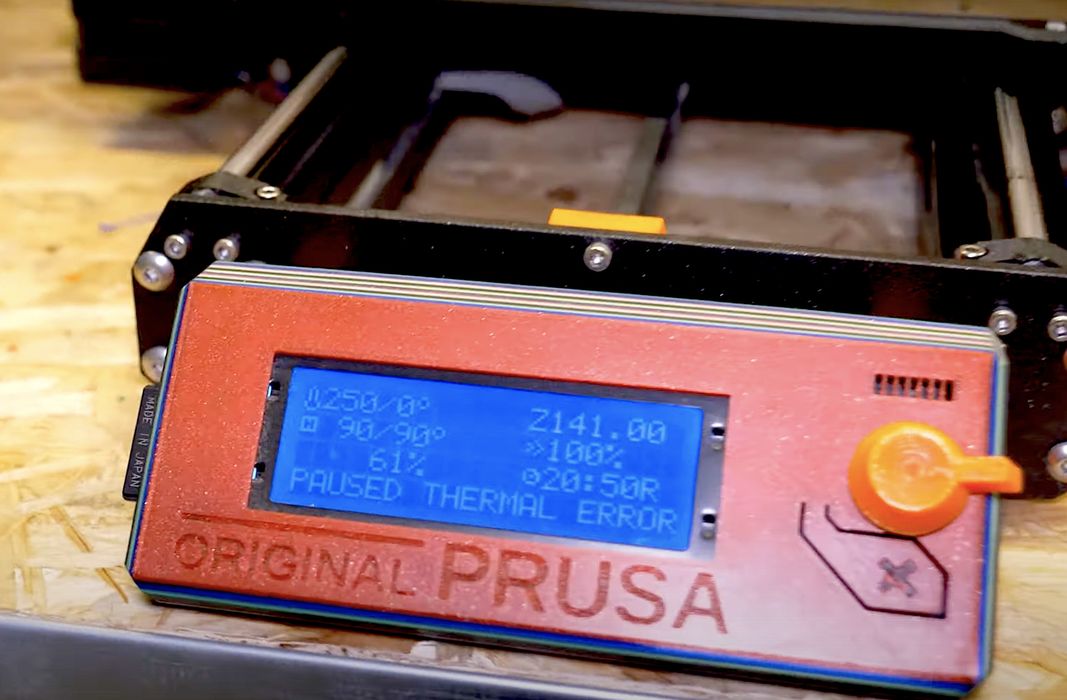
Prusa Research announced a new beta version of their 3D printer firmware that takes a more sophisticated approach to thermal management.
3D printer thermal management is at first glance rather straightforward: keep the hot end at the set temperature, and that’s about it.
That’s not all there is, however. There are plenty of unusual situations that must be handled, all the while trying to be energy efficient and ensure jobs actually complete successfully.
Thermal management has long been an issue. When the original desktop FFF 3D printers emerged in 2009, many had a really big problem: thermal runaway.
Thermal runaway occurred when the temperature sensor malfunctioned, telling the controller that the set temperature hadn’t been reached. In response the controller would plow more energy into the heating element. That might make sense to the controller, but in reality the set temperature was already reached and the sensor wasn’t reporting it properly. This very scenario led to multiple incidents of fires, most notably with the old ANET A8 3D printer.
Since then almost all desktop FFF 3D printers include a firmware procedure to handle thermal runaways, saving who knows how many people from disaster. Prusa Research has always included such code.
The typical thermal runaway process prevents catastrophe, but also can disrupt normal 3D printing activities. For example, if a hot end cools down suddenly, perhaps from a cool breeze from an open windows, the code can interpret this as a sensor failure and then quickly shut down the machine. Safe, but annoying. I’ve actually been a victim of this scenario myself.
The latest news is that Prusa Research has apparently been spending considerable time in their labs designing a better way to manage thermals in their 3D printers.
What have they changed? Prusa Research explains:
“With the new Thermal model protection, we’re aiming to detect unexpected heating issues of any sort and stop heating quickly (in 10-12 seconds) to avoid potential damage to your 3D printer. This encompasses cabling issues, an incorrectly working heater block, thermistor faults and external factors too (draft, blobs forming on the extruder, etc.).
This is all based on an internal simulation of the hotend, meaning that the firmware constantly checks whether the thermistor readings are following a specific pattern in the thermal model. In case anything seems off, the printer reacts within seconds and displays a THERMAL ANOMALY warning which goes away in case the readings go back to expected numbers within 5 seconds. In case the anomaly stays, the printer turns off the heating and activates a warning sound to notify the user. In other words, this is a great addition to already existing thermal protection systems that have been in the printer from the start.”
Here’s a video of the new firmware in action:
One very interesting aspect of this firmware is that it appears to custom calibrate this model prior to operation. This is critically important, because not all machines are the same, and that’s required for the many who have modified their Prusa 3D printer by, perhaps using an enclosure to capture stray heat. Other modifications are also done, but the idea here is that the calibration should be able to incorporate their behaviors into its processing.
The major change here is that the detection process then yields to the operator to determine what, if anything, is really wrong. The operator is expected to be available in case a detection occurs, but that’s good practice anyway — desktop FFF 3D printers should never be left on their own for extended periods.
One important fact here is that this new firmware is targeted only at the company’s MK3/S/+ machines, and not the earlier MK2/S/+ machines that up to now were still receiving updates. It’s likely that the more advanced electrical system in the MK3/S/+ machines was more conducive to this treatment, leaving the MK2/S/+ machines behind. This could be one of the first indications that Prusa Research could be moving on from support of the MK2/S/+ machines, but we’ll see how things proceed.
Prusa Research has published a very detailed explanation of how this works, including charts and visualizations.
It’s likely that this code will eventually make its way onto the default firmware used on every Prusa 3D printer, and that’s good news.
Via Prusa Research

